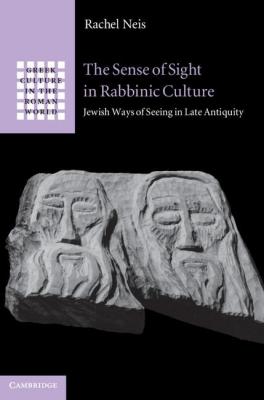Rafael Neis is jointly appointed in the Department of History and in the Frankel Center for Judaic Studies at the University of Michigan, where they’ve been teaching since 2007. They have degrees in Law, Religion, and Jewish Studies from the London School of Economics (1995), Boston University (2002), and Harvard University (2007). Their training has been enriched by the study of philosophy and Jewish sources at Hebrew University and other (non-academic) institutions, and by the life-long study and making of art.
Neis’s research and teaching are primarily in the fields of Jewish Studies, Religion, Visual and Material Culture, and Comparative Law and Legal Theory. They are interested in the formation and variations of Jewish cultures in the broader religious, social, and political contexts of late antiquity (1st–7th centuries CE approx) across the Mediterranean and Near East. Questions related to the body and the senses, materiality and ritual space, the formations of religious identity and practice, and the boundaries between humans and other entities (animals, objects, images) drive my work. In their writing, these interests have led them to questions about the history of the senses, particularly the sense of sight, and the relationships between the body and religious ritual, law, and narrative. They have written about visuality, prayer, pilgrimage, icon–veneration and ‘mystical texts,’ and toilet habits. Their course offerings range from comparative ancient law and legal theory, to the history of Jewish art and visual culture, and from ancient Jewish history and Rabbinic literature to Jewish sexualities.
 In their first book, they turned to how ancient Jews particularly the sages known as the Rabbis who lived in Roman Palestine and Persian Mesopotamia in the first several centuries of the Common Era understood, experienced, and attempted to shape vision. This work led them not only to carefully analyze ancient Jewish ‘classics’ such as the Mishnah, Midrash, and the Talmud, but also to connect these sources with GrecoRoman medical and philosophical theories of vision, Persian Zoroastrian understandings of the evil eye, and Christian texts on modesty and the gaze. The world of late antiquity has been described as being “visually voracious” and rabbis no less than others sought to cope with the potential dangers and pleasures that the eye could sustain or inflict. For them, therefore, to study Jewish culture, means recognizing its thorough embeddedness and imbrication with other cultural formations, and entails going well beyond a narrow definition of ‘Jewish’ sources. Click here to see more about this book.
In their first book, they turned to how ancient Jews particularly the sages known as the Rabbis who lived in Roman Palestine and Persian Mesopotamia in the first several centuries of the Common Era understood, experienced, and attempted to shape vision. This work led them not only to carefully analyze ancient Jewish ‘classics’ such as the Mishnah, Midrash, and the Talmud, but also to connect these sources with GrecoRoman medical and philosophical theories of vision, Persian Zoroastrian understandings of the evil eye, and Christian texts on modesty and the gaze. The world of late antiquity has been described as being “visually voracious” and rabbis no less than others sought to cope with the potential dangers and pleasures that the eye could sustain or inflict. For them, therefore, to study Jewish culture, means recognizing its thorough embeddedness and imbrication with other cultural formations, and entails going well beyond a narrow definition of ‘Jewish’ sources. Click here to see more about this book.
Currently, they are engaged several projects having completing a second book on rabbinic conceptions of reproduction, humans, and other species, entitled When a Woman Gives Birth to a Raven: the Rabbis and the Reproduction of Species in Late Antiquity to be published by University of California Press.

